Market Analysis
Digital Camera Market (Global, 2024)
Introduction
The digital camera market is undergoing a revolutionary change as technological progress and changing customer preferences continue to shape the future of photography. The increased use of smartphones with high-quality cameras is putting increasing pressure on the traditional digital camera market. Nevertheless, there is a loyal group of professionals and enthusiasts who value the superior image quality, flexibility and creative control offered by digital SLRs. Mirrorless technology, higher sensitivity sensors and increased integration of smart features are enabling the development of new products that meet the needs of both amateur and professional photographers. As social media usage continues to grow, consumers are seeking high-quality images and videos to share with their followers. In response to these trends and customer needs, the digital camera market is expected to continue to evolve as a dynamic interplay of competition, innovation and engagement.
PESTLE Analysis
- Political
- In 2024 the digital camera market will be influenced by various political factors, such as trade policies and tariffs. For example, the U.S. has imposed a 25% tariff on the importation of certain Chinese-made electrical products, including digital cameras. This policy will increase the costs of production for the manufacturers that depend on Chinese components and may ultimately increase the prices of their products. Similarly, the European Union has adopted a stricter waste disposal policy. From 2024, all electrical products must be recycled at a rate of at least 65%.
- Economic
- The ominous outlook for the digital camera market in 2024. The average disposable income in the United States is expected to be around 54,200, which will affect the consumption of non-essential items like digital cameras. Inflation is expected to hover around 3.5%, which will also affect the purchasing power of consumers, and it is possible that the sales of high-end models will fall. However, the unemployment rate in the world is expected to be around 5.2%, which will increase the confidence of consumers and the consumption of digital cameras, especially by amateurs and professionals.
- Social
- Social trends in 2024 show a growing interest in photography as a hobby, especially among the younger generations. The percentage of millennials and Generation Z consumers who are said to take part in photography is estimated at around 70 per cent. The work of these amateurs is frequently shared on social media. This trend has led to a greater demand for digital cameras that offer high image quality and digital communication capabilities. The influencer culture has created a new niche for compact and portable digital cameras. Forty per cent of consumers prefer to carry a digital camera that is easy to carry and share.
- Technological
- In 2024 the digital camera market will continue to be shaped by technological developments. Artificial intelligence is a major feature of digital cameras. For example, automatic scene recognition and improved image stabilization are becoming key selling points. In 2024, about 60 percent of new digital camera models will have some form of artificial intelligence to improve the image quality and the user experience. Also, the integration of 5G into the camera is expected to make it easier to share high-resolution images. About 25 percent of the new digital camera models will have this feature to meet the needs of content creators.
- Legal
- In 2024 the digital camera market will be influenced by legal factors. These will include compliance with international standards and regulations. Europe’s General Data Protection Regulation (GDPR) requires any camera with a connection to the Internet to protect its users’ privacy. This will affect the way manufacturers design their products. In the United States, the FCC has set new guidelines for wireless devices that all digital cameras with a wireless connection must meet by 2024. Fines of up to $250,000 per violation will force manufacturers to invest in compliance.
- Environmental
- In the digital camera market, where consumers are becoming increasingly aware of the environment, such considerations are becoming more important. It is estimated that by 2024, some 30 per cent of consumers will favour brands that adopt a sustainable approach to manufacturing and use recycled materials for their products and packaging. Also, pressure is growing on manufacturers to reduce their carbon footprint. In fact, they are expected to achieve a 50 per cent reduction in greenhouse gas emissions by 2030. In order to meet these targets, companies are investing in sustainable technology.
Porter's Five Forces
- Threat of New Entrants
- The digital camera market has moderate entry barriers due to the high cost of development and marketing. The existing brands have strong brand loyalty and distribution networks, making it difficult for new entrants to gain market share. However, the rapid development of digital technology and the rise of the Internet may reduce some of the entry barriers, and some niche players may be able to enter the market.
- Bargaining Power of Suppliers
- The bargaining power of suppliers in the digital camera market is relatively low. There are many suppliers of sensors, lenses and other components, which reduces the dependence on any one supplier. Also, large manufacturers often have the ability to change suppliers or even produce components themselves, which reduces the power of suppliers even further.
- Bargaining Power of Buyers
- In the digital camera market, buyers have a high bargaining power, because there are many choices. The choice of brands and models makes it easy for consumers to compare the features and prices of various products, and thus makes them price sensitive. Also, the rise of the Internet and social media has increased the knowledge of consumers and their bargaining power.
- Threat of Substitutes
- The threat of substitutes is high, primarily because of the growing capabilities of mobile phones. The camera on these phones is often sufficient for everyday use. Also, other devices, such as action cams and drones, compete for the same market share. It is therefore necessary for digital camera manufacturers to continuously develop new products.
- Competitive Rivalry
- Competition is fierce in the digital camera market, with several established brands vying for market share. Canon, Nikon, Sony and Fujifilm all have their own distinctive strengths, and they are constantly innovating and launching new products to win over consumers. The rapid development of technology and the need to differentiate products have also intensified competition, leading to a price war.
SWOT Analysis
Strengths
- High image quality and advanced features compared to smartphones.
- Strong brand loyalty among professional photographers and enthusiasts.
- Diverse product range catering to various consumer segments.
Weaknesses
- Higher price point compared to smartphones, limiting accessibility.
- Complexity of use may deter casual consumers.
- Declining sales in traditional camera segments due to smartphone competition.
Opportunities
- Growing interest in content creation and social media driving demand.
- Technological advancements in AI and image processing enhancing product appeal.
- Expansion into emerging markets with increasing disposable income.
Threats
- Intense competition from smartphone manufacturers offering high-quality cameras.
- Rapid technological changes leading to shorter product life cycles.
- Economic downturns affecting consumer spending on non-essential items.
Summary
In 2024, the digital camera market is characterized by high image quality and brand loyalty, but faces challenges in the form of high prices and competition from mobile phones. Opportunities are created by the content creation trend and technological developments, but threats are economic fluctuations and rapid changes in the market. In order to succeed in the competition, companies must exploit their strengths and opportunities.

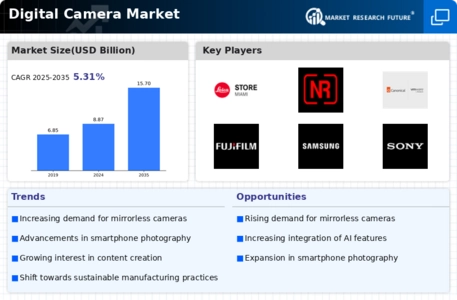
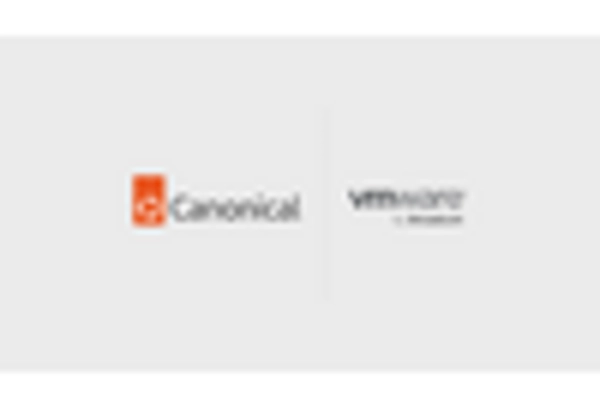
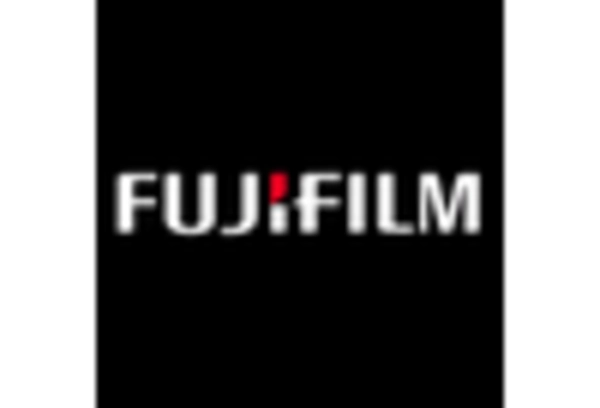
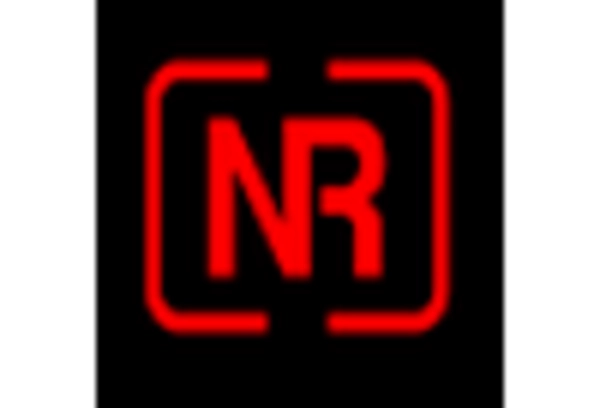

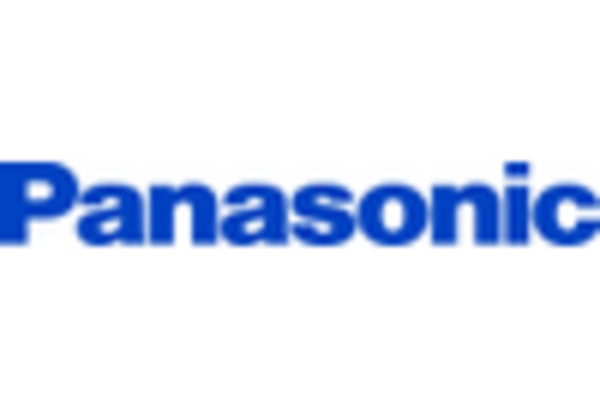
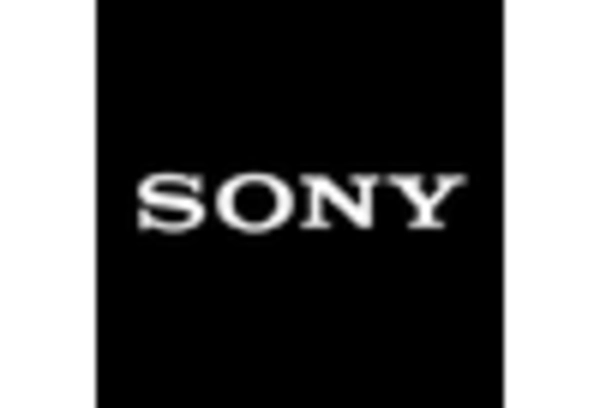









Leave a Comment